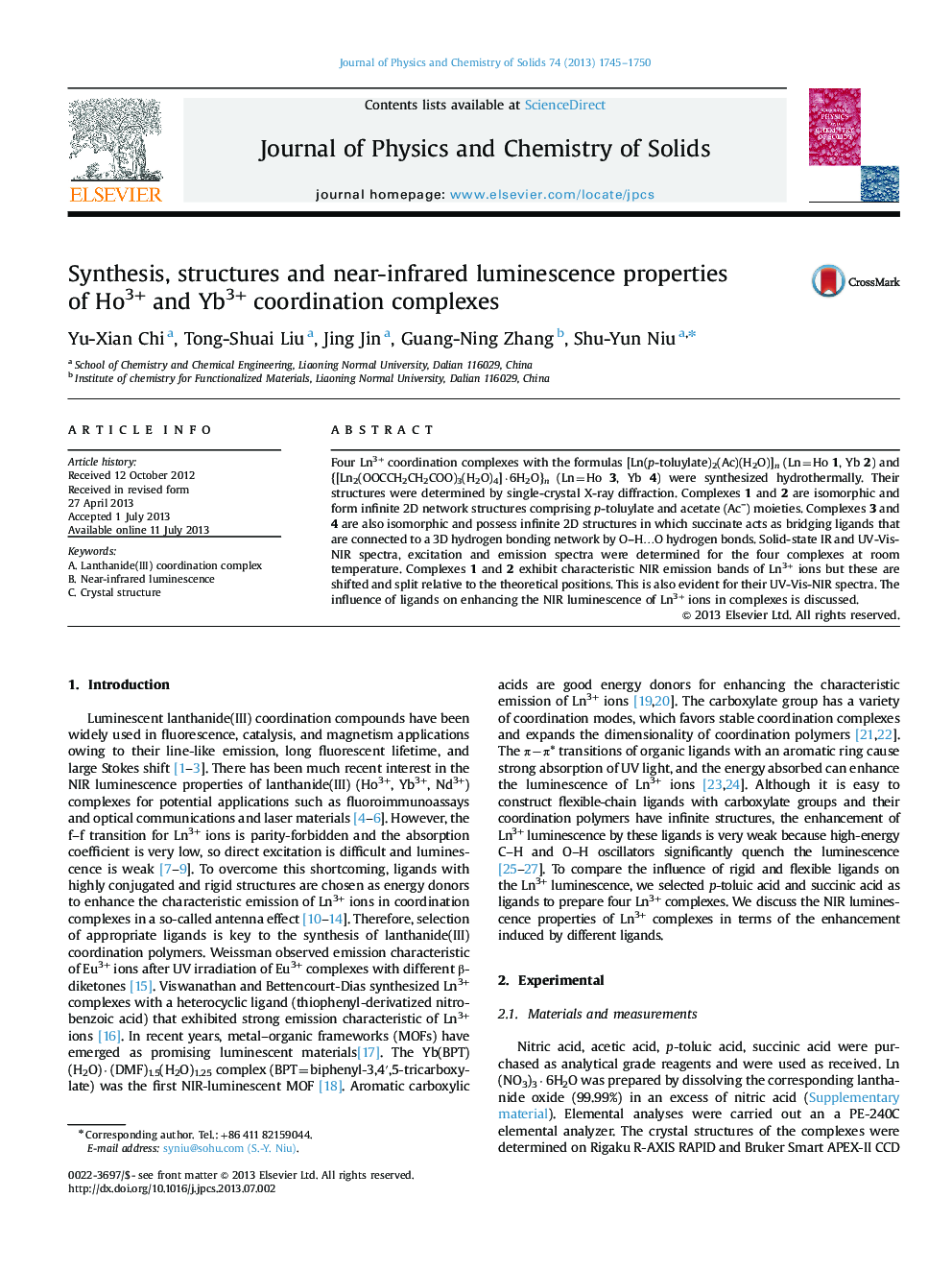| Article ID | Journal | Published Year | Pages | File Type |
|---|---|---|---|---|
| 1516139 | Journal of Physics and Chemistry of Solids | 2013 | 6 Pages |
•Polymers 1–4 were hydrothermally synthesized and possess infinite 2D structures.•Polymers 1–4 show characteristic emission bands of Ln(III) ions in the NIR region.•NIR emission peaks show shifting and splitting relative to their theoretical positions.•The enhancement of Ln(III) luminescence differs for different ligands.
Four Ln3+ coordination complexes with the formulas [Ln(p-toluylate)2(Ac)(H2O)]n (Ln=Ho 1, Yb 2) and {[Ln2(OOCCH2CH2COO)3(H2O)4]·6H2O}n (Ln=Ho 3, Yb 4) were synthesized hydrothermally. Their structures were determined by single-crystal X-ray diffraction. Complexes 1 and 2 are isomorphic and form infinite 2D network structures comprising p-toluylate and acetate (Ac–) moieties. Complexes 3 and 4 are also isomorphic and possess infinite 2D structures in which succinate acts as bridging ligands that are connected to a 3D hydrogen bonding network by O–H…O hydrogen bonds. Solid-state IR and UV-Vis-NIR spectra, excitation and emission spectra were determined for the four complexes at room temperature. Complexes 1 and 2 exhibit characteristic NIR emission bands of Ln3+ ions but these are shifted and split relative to the theoretical positions. This is also evident for their UV-Vis-NIR spectra. The influence of ligands on enhancing the NIR luminescence of Ln3+ ions in complexes is discussed.
Graphical abstractFour coordination polymers (Ln = Ho, Yb) were hydrothermally synthesized and characterized. They exhibit infinite 2D structures. The four polymers show characteristic emission bands of Ln(III) ions in the NIR region.Figure optionsDownload full-size imageDownload as PowerPoint slide
